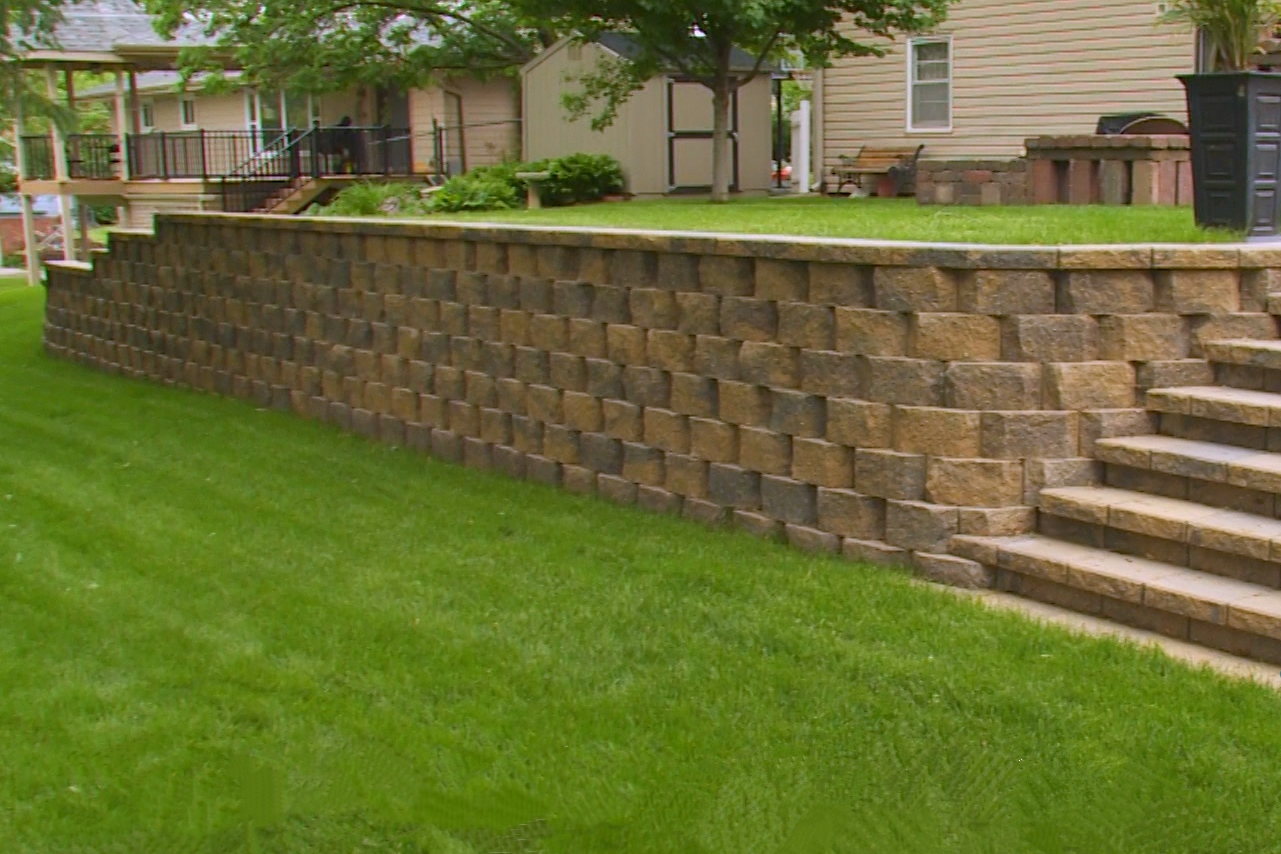The Best Strategy To Use For Retaining Wall And Garden Wall Construction
Table of ContentsThe smart Trick of Retaining Wall And Garden Wall Construction That Nobody is Talking AboutThe smart Trick of Retaining Wall And Garden Wall Construction That Nobody is DiscussingAn Unbiased View of Retaining Wall And Garden Wall Construction9 Simple Techniques For Retaining Wall And Garden Wall Construction
If this slope is not controlled, the wall will certainly move or fail. Rain that runs off the top of a retaining wall surface can damage the dirt as well as plants on either side, deteriorating them away. Drain systems divert this water from vulnerable locations, minimizing the impact to the structure and its environments.It's been said fifty percent of all the issues with preserving wall surfaces include drainage as well as water concerns, and keeping water out of these walls is a large one. If it's dry, there's little to no possibility any plants can hold - Retaining Wall And Garden Wall Construction. A correctly made as well as installed system will maintain your wall completely dry, saving you cash on upkeep as well as substitute costs.
All retaining walls need to consist of drainage stone even if a draining pipes pipeline is not called for. Place filter fabric above the drain rock and also listed below the topsoil. That prevents great material and organic matter from blocking up the drain rock.

The Ultimate Guide To Retaining Wall And Garden Wall Construction
This damages can be expensive to repair, and a properly mounted drainpipe would have avoided it (Retaining Wall And Garden Wall Construction).

A maintaining wall surface is developed to hold in area a mass of earth or the like, such as the edge of a balcony or excavation.

These are cantilevered from a footing and surge over the grade on one side to keep a greater degree quality on the contrary side. The walls must resist the side stress produced by look at this web-site loosened soils or, sometimes, water stress. Every keeping wall sustains a "wedge" of soil. The wedge is specified as the dirt which expands past the failure airplane of the dirt type present at the wall surface website, as well as can be determined once the soil friction angle is recognized.
How Retaining Wall And Garden Wall Construction can Save You Time, Stress, and Money.
This decrease reduces the pressure on the preserving wall surface. (phi) and the cohesive strength (c) of the preserved material, as well as the instructions and magnitude of activity the maintaining framework undergoes.
Water drainage products will lower or get rid of the hydrostatic stress as well as boost the security of the material behind the wall surface. Drystone retaining wall surfaces are generally self-draining. As an example, the International Building Regulations needs keeping walls to be developed to guarantee stability versus overturning, sliding, extreme foundation pressure as well as water uplift; which they be made for a security aspect of 1. Various sorts of keeping wall surfaces Building and construction kinds of gravity keeping walls Gravity walls rely on their mass (stone, concrete or other heavy material) to resist pressure from behind and also may have a 'batter' trouble to boost security by leaning back towards the preserved soil. For brief landscaping wall surfaces, they are typically made from mortarless rock or segmental concrete devices (stonework systems).
These walls cantilever look these up tons (like a beam of light) to a big, architectural footing, transforming horizontal stress from behind the wall surface to upright stress on the ground below. In some cases cantilevered wall surfaces are buttressed on the front, or include a counterfort on the back, to boost their stamina standing up to high lots. Buttresses are brief wing walls at best angles to the primary trend of the wall. This type of wall utilizes much less product than a standard gravity wall. Diaphragm walls are a type of keeping walls that are really stiff and also usually watertight. Diaphragm wall surfaces are costly wall surfaces, however they save time as well as area, and hence are made use of in metropolitan constructions. Sheet heap keeping wall surfaces are typically used in soft dirt and limited rooms.
For a quick price quote the material is normally driven 1/3 above ground, 2/3 listed below ground, but this may be modified depending on the setting. Taller sheet pile wall surfaces will certainly need a tie-back anchor, or "dead-man" positioned in the soil a distance behind the face of the wall surface, that is tied to the wall, normally by a cable or a her response pole.
Some Ideas on Retaining Wall And Garden Wall Construction You Need To Know
A secured preserving wall surface can be constructed in any one of the aforementioned styles but also includes additional toughness utilizing cords or other remains anchored in the rock or soil behind it. Normally driven right into the material with boring, anchors are then increased at the end of the wire, either by mechanical methods or frequently by injecting pressurized concrete, which expands to create a bulb in the soil.